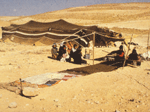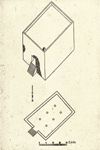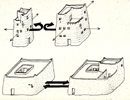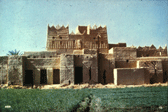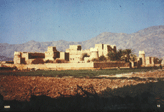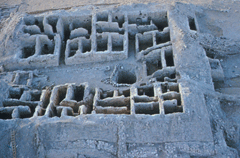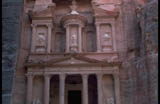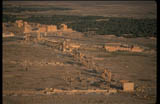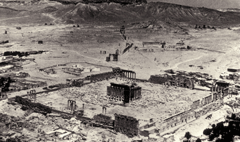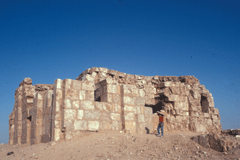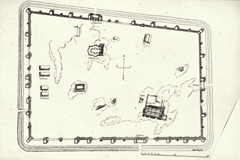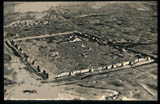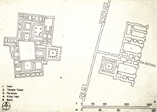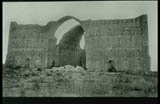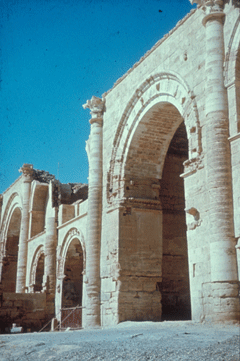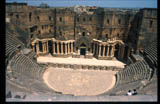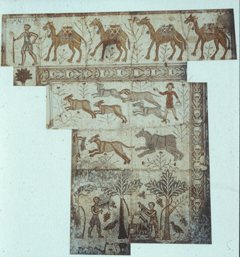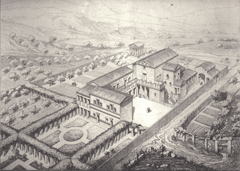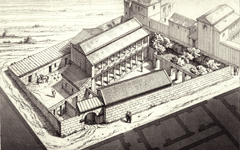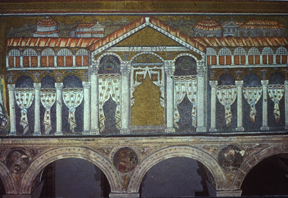AGA KHAN PROGRAM FOR ISLAMIC ARCHITECTURE
Course 4.611/4.613:
1-Precedents and Prototypes: (Click on images to enlarge)
The Architectural Repertoire Available to the Arabs before Islam:
Tent: The Dwelling of the Nomad
The spatial and functional division of the tent.
Axonometric of the Three-pole Tent |
View of a Nomad Tent |
The Architecture of Urban Settlements in Arabia:
Mecca: The cult and trade center.
Axonometric and Plan of the Ka'ba, also called Bayt-Allah "The Abode of God" |
The Atam in Medina: fortified common dwellings in oases.
The typology of Atam |
Present day agricultural settlement from Southern Hijaz in Arabia that preserves some aspects of the Pre-Islamic Atam |
Present day agricultural settlement from Southern Hijaz. |
The Palaces of Yemen.
A modern day house of Old Sana'a, Yemen |
Plan of a large residence from Qaryat Al-Faw |
The Hellenistically influenced fresco of an Arabian King from Qaryat Al-Faw |
The Architecture of Urban Centers in the Levant and Mesopotamia:
Petra: The Nabatean Capital Carved in the Rock.
Frontal view of the so-called Khaznet-Fir'awn (the Treasury of Pharoah), a second century A.D. rock tomb in Petra |
Rock cut tomb
|
Palmyra: A Caravan City turned Imperial Center.
Aerial view of the Decumanus of Palmyra showing heavy Roman influences in its plan. |
Aerial view of the Baal Temple Temenos |
Rusafa (Sergiopolis): Capital of the Ghassanids, the Christian Arab tribe allied with Byzantium.
View of the remains of the Palace of the Ghassanid King Al-Munther outside Rusafa |
Plan of the walled city of Sergiopolis (Rusafa) |
Aerial view of the Roman city of Sergiopolis (Rusafa) |
The Mesopotamian and Persian Models: The Assyrian palaces of Nineveh and Assur.
Plan of the Assyrian palace in Assur |
The Iwan Kisra at Ctesiphon: The seat of Sassanian Kings.
A photo of the iwan taken before 1883 when the flood destroyed the monuments right wing |
Al-Hira (Hatra) in northern Mesopotamia: The Hiri style.
The facade of the temple of Hatra showing Persian and classical influence |
The Byzantine and Greco-Roman Models:
Bostra: Present-day Busra. A Syrian-Roman city and a capital of the Nabateans; the illustration of urban splendor in the eyes of the Prophet Muhammad.
View of the Roman amphitheatre |
Mosaic panels from Busra dating to the 6th century and showing an Arabian caravan |
The "Dead Cities" in Byzantine northern Syria.
Remains of a tower from the village of Bariha in the Dead cities region |
Facade of a residential building from the dead cities region |
Reconstruction of a farm house from the Dead Cities |
Reconstruction of a farm house from the Dead Cities |
The Poetic and Visual Images of Imperial palaces in Constantinople:
The representation of the Palace of Theodoric at St. Apollinaire Nuovo in Ravenna.
St. Apollinaire |

